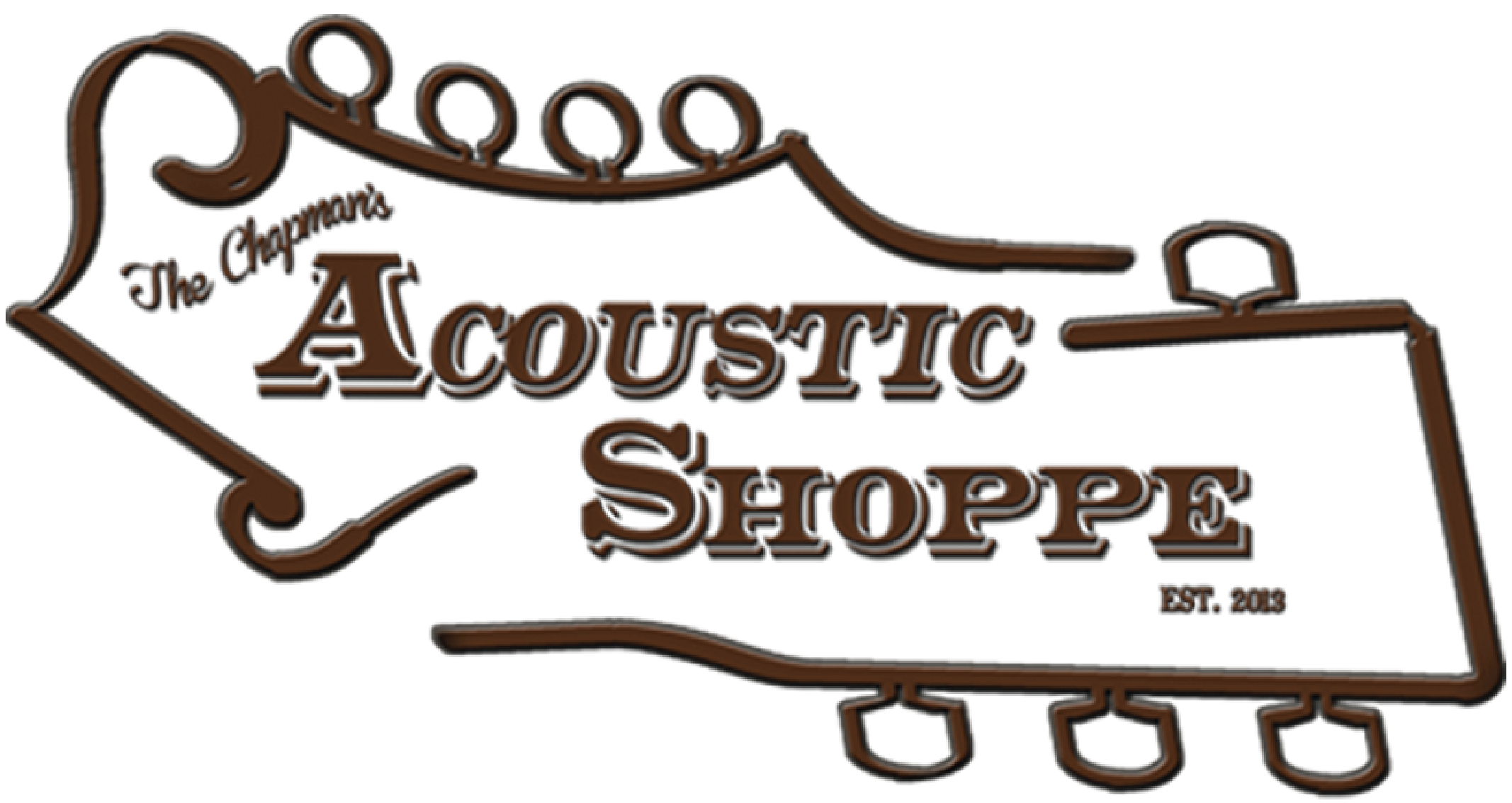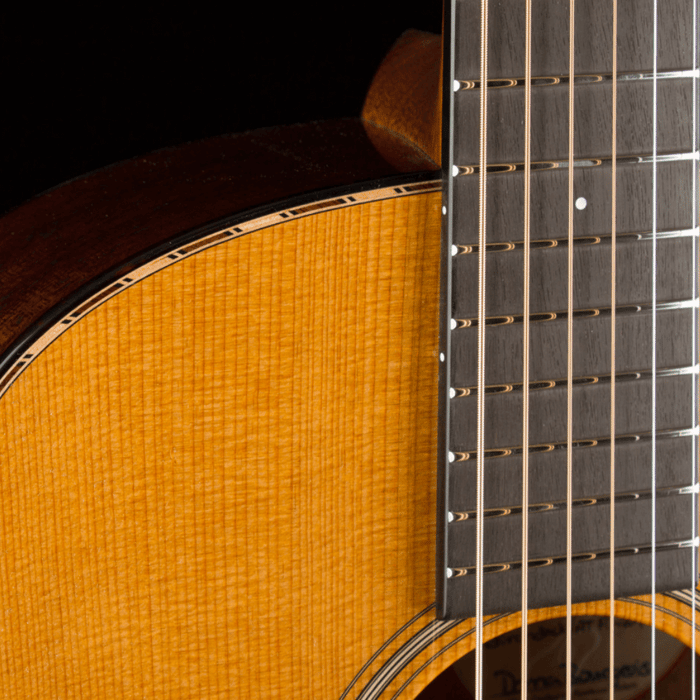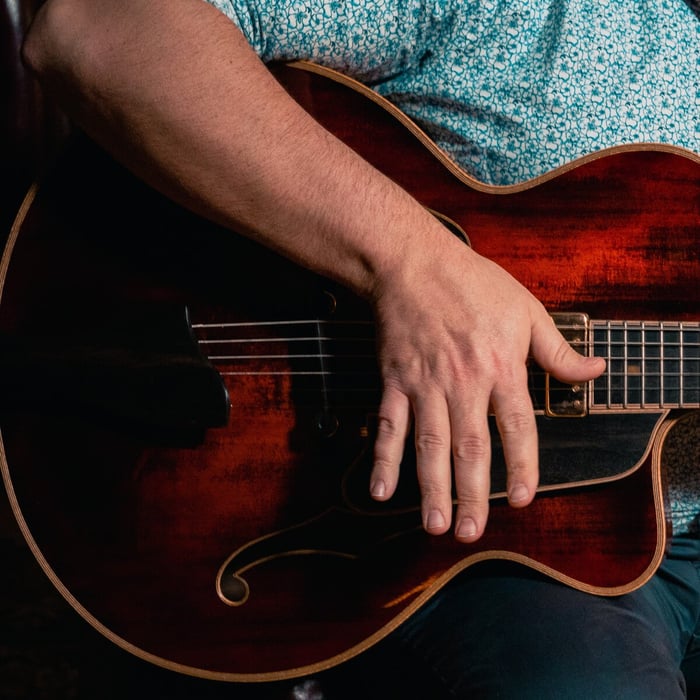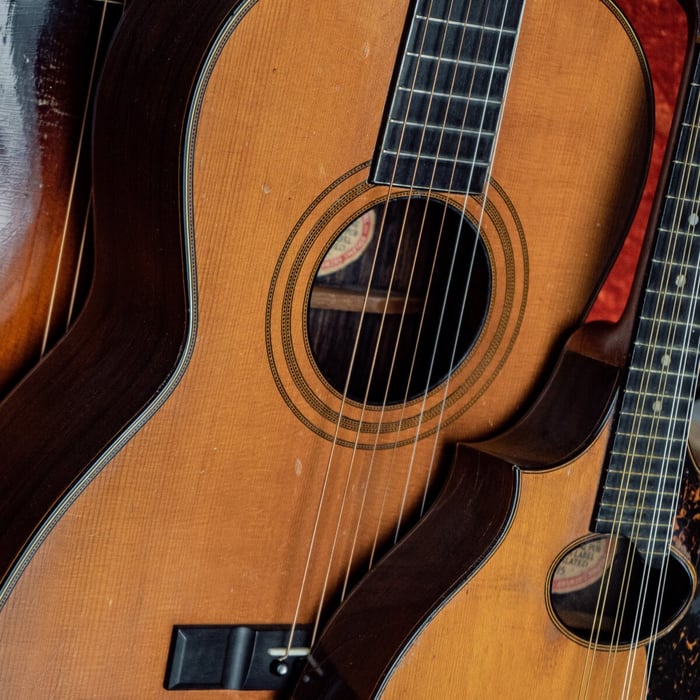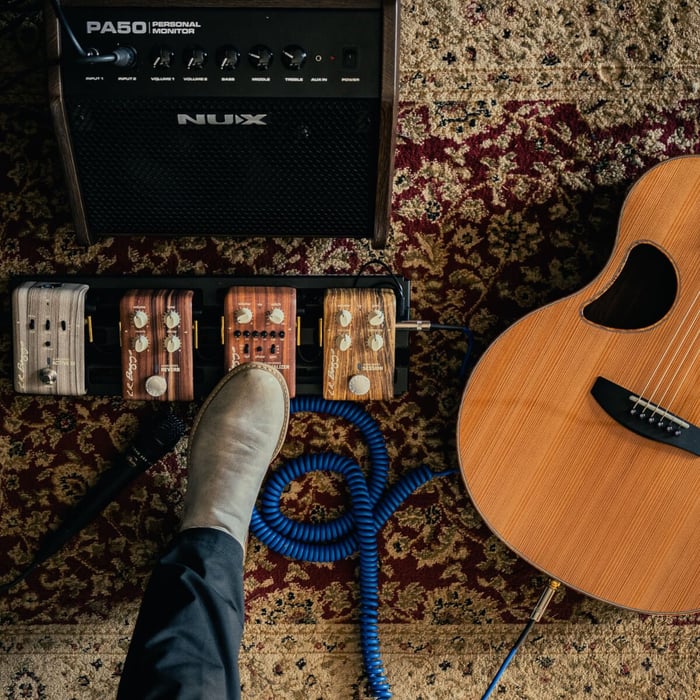What is Thermo-Curing /Torrefaction?
When a guitar player buys a new guitar, they don’t want it to necessarily sound new. They want the newest features combined with the newest guitar-building techniques, but they want it to sound like it has been played for longer than they’ve been alive. They want it to sound “Vintage”. We recommend Thermo-Cured Instruments.

Martin is known for creating many new guitars that harken back to the glory days of acoustic guitar building, such as the Vintage Series or the Authentic 1931 Series. Through these models they are subtly saying to the consumer that they are creating the guitar in the same way they did 80-100 years ago. However, even if they match the specs perfectly, they can’t escape the fact that the new guitar is made from fresh, organic materials. So, with the consumer’s obsession with vintage guitars, many manufacturers are racing to achieve that glory days sound through the process of Thermo-Curing the soundboard.
Baked, Cooked… Roasted?
In the acoustic guitar community, this process has many names. Some call it Torrefaction, Torrification, Thermo-curing, thermally modifying, or others say “baked”, “cooked”, or even “roasted”. Torrefaction refers to the process of changing the chemical composition of a biomass material such as wood or grain. Torrefaction is the general term for heating up a material without oxygen, so a more appropriate term for the Acoustic guitar world would be Thermo-Curing or thermally modifying. It’s called “curing” because the processed wood is heated up to the extent that the natural oils and sugars are cooked out.
So, is this just another Acoustic guitar buzzword or is this making a substantial difference in tone?
In the video below, we conducted what is called a “blind shootout” in which we compare two Eastman guitars, one with a standard Adirondack top, the other with a thermo-cured Adirondack top.
What Are the Benefits of a Thermo-Cured Guitar?
Although this is not true for every instrument, you can expect these qualities in a thermo-cured guitar.
-
Emulates a vintage tone, which is commonly described as dry, warm and punchy. Emulates is the key word here. A common misconception about thermo-cured guitars is that they will sound exactly like a vintage instrument. Although the wood is being prematurely aged 50 years, the guitar has not been played for 50 years. The wood in a vintage guitar has been “broken in”, meaning it flexes with the sound waves and moves more freely. In the words of John Chapman, “the wood has to learn how to quit being a tree, and act like an instrument”.
-
Takes in less moisture than normal wood, which means it is less likely to warp and crack from lack of humidity or too much humidity. This is why some Electric guitar necks are thermo-cured, to prevent them from warping. For acoustic soundboards, thermo-cured tops are less likely to develop “bellies” (when the area below the bridge raises up and creates a mound shape). However, even though the wood itself is less susceptible to cracking, the lacquer or polyurethane finish on the guitar can crack from lack of moisture/too much moisture.
-
Because of the openness of the pores, thermo-cured tops are typically louder. You can expect more warmth, depth, and fullness.
-
Weighs less. Because the moisture, sugars, and oils have evaporated you’re left with a top that is approximately 20% lighter.
-
Looks vintage! In the process of heating up the wood the top is darkened. This makes thermo-cured spruce resemble cedar, and thermo-cured maple tops can even resemble cherry.
Check the Specs
Because of the complexity of luthier techniques and the uniqueness of tonewoods, it can be hard to determine which factors are contributing to the sound you hear coming out of the soundhole. That is to say, just because a guitar brand creates a guitar with a “baked top”, does not mean that guitar will sound vintage. There are numerous factors at work, such as wood choice, bracing, nut material, craftmanship, etc. Watch out for brands that market guitars as “vintage” but are using laminated woods and plastic nuts. Those won’t necessarily sound how you want them to sound.
The Top 5 Thermo-Cured Guitar Brands
-
Boucher
It is only appropriate to list Boucher as number one, as they are the very first guitar builder to develop a thermo-cured guitar. Made in Quebec, CA, Boucher collaborated with the University Laval of Quebec to develop a “unique roasting process that accelerates the aging of Adirondack Spruce”. Boucher’s AAAA-rated Adirondack Spruce is forested near the Northern Appalachian Mountains, in the “backyard” of their headquarters. Few builders can match the authentic quality of these handcrafted guitars. Their Heritage Goose series (named after the snow geese that annually migrate to the Appalachian Mountains) guitars feature torrefied AAAA Adirondack Spruce with a variety of back and sides options such as African bubinga, Brazilian Mahogany, East Indian Rosewood, or Canadian Curly Maple.
Check out our Boucher selection here.
-
Eastman
There are few brands that have grown into multi-million-dollar companies, produce hundreds of thousands of instruments, and still keep everything 100% hand-built. Eastman has become a top tier acoustic brand in the last 10 years, matching or exceeding the quality of “boutique” US builders. The Eastman Thermo-Cured series was made in collaboration with the Acoustic Shoppe, and the Adirondack spruce comes from our very own Columbia, Missouri. With every top being hand chosen and hand tap-toned, every Eastman is entirely unique. Eastman currently makes five thermo-cured guitars:
- the E6D-TC (Dreadnaught, Sitka/Mahogany)
- the E10D-TC (Dreadnaught, Adirondack/Mahogany)
- the E10OM-TC (Orchestra Model, Adirondack/Mahogany)
- the E20D-TC (Dreadnaught, Adirondack/Indian Rosewood)
- the E20OM-TC (Orchestra Model, Adirondack/Indian Rosewood)
Each guitar also features a bone nut and saddle, scalloped bracing, and a gloss nitrocellulose finish. All for less than $1,800!
Check out our Eastman selection here.
-
Bourgeois
In 2012, Dana Bourgeois introduced Aged Tone guitars, a series that combines a torrefied top with an “aged tone” finish and real hide glue. But Bourgeois is constantly innovating and improving their guitars, so they took it one step further with the Fully Torrefied series. Most guitar makers are only using thermo-curing on the soundboard. Reason being that thermally modified wood has proven to be less bendable, making it difficult for builders to shape the sides. However, Bourgeois found a way. They have developed the first Fully Torrefied guitar, that is not only “roasted” on the soundboard, but on the back and sides as well. Dana says, “a fine guitar is more than just its top wood” and that the process of thermo-curing the whole guitar gets you one step closer to, “the sound and look of vintage instruments, with increased sustain and responsiveness”.
Check out our Bourgeois selection here.
-
Huss & Dalton
The Huss & Dalton story is one of collaborative friendship. Mark Dalton and Jeff Huss joined forces in 1995 after meeting at a jam session in Virginia. The two builders have their own unique skill sets and constantly challenge each other to bring something new to the acoustic guitar world. Huss & Dalton make handmade, custom shop boutique guitars that are often specially ordered by the dealer. They recently introduced thermo-curing to their extensive list of custom options. Check out this custom Huss & Dalton TOM-R:
Check out our Huss & Dalton selection here.
-
Collings
You can’t talk about high quality acoustic guitars without mentioning Collings. Bill Collings made acoustic instruments in Texas from the mid-1970’s until his death in 2017. His highly skilled luthiers carry on his legacy. The Collings brand is now making everything from Archtop guitars to hand-carved Mandolins. In fact, Collings is the first (and possibly only) maker creating mandolins with thermo-cured tops.
If we get Collings guitars, they can be found here.
